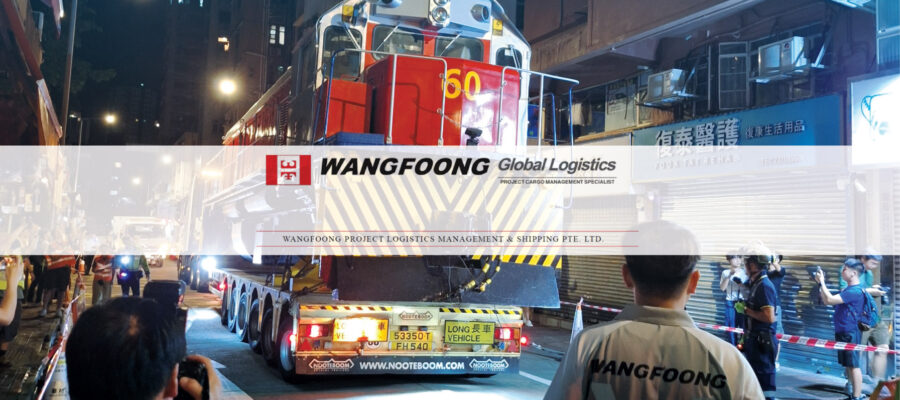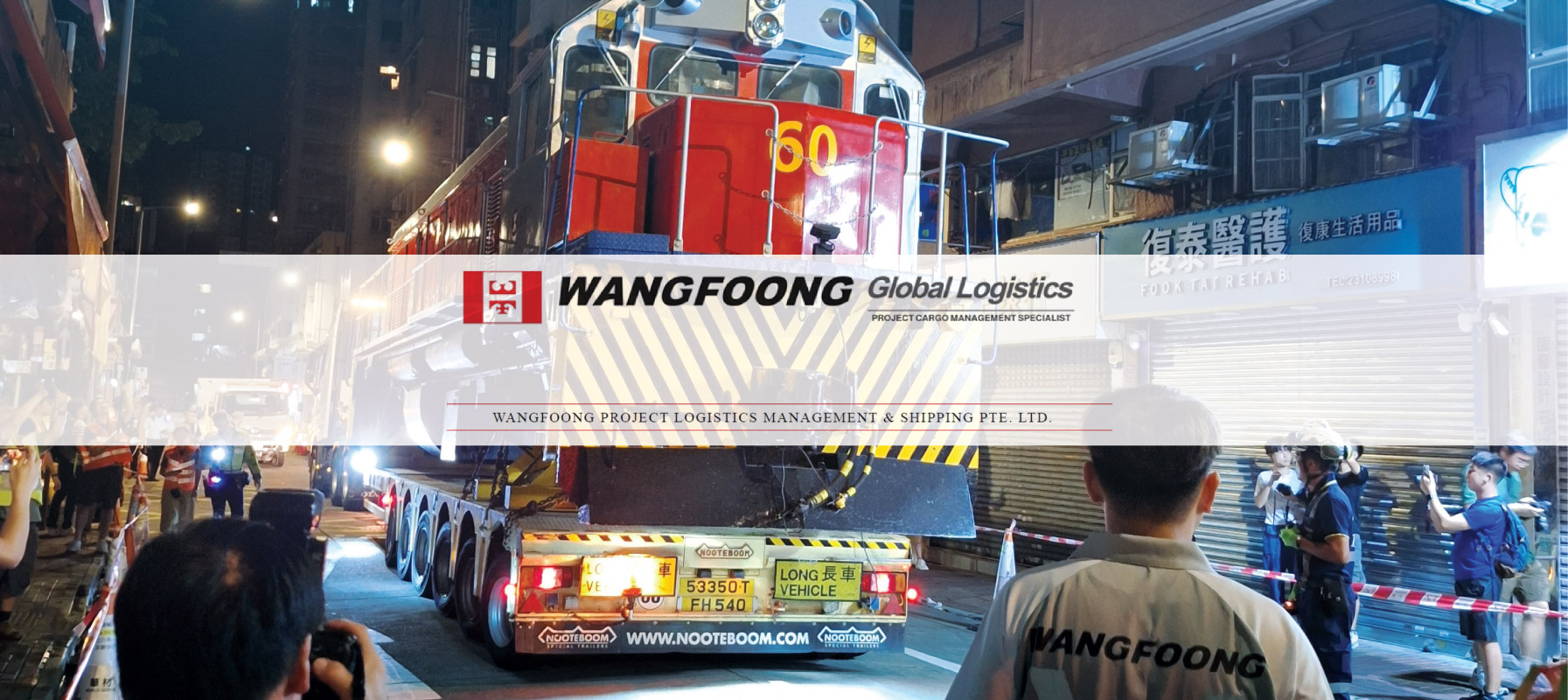Interview with
Ms. Rae Choong
Managing Director

First of all, Rae, can you tell our readers about your career and background in logistics?
I have over 25 years of experience in logistics and supply chain management, with a particular focus on complex, large-scale projects in the energy and infrastructure sectors across the Asia-Pacific region. My background combines strategic planning with hands-on operational execution, allowing me to manage end-to-end logistics for high-value, oversized components such as wind turbines and power transformers.
I hold a Master of Science in Supply Chain Management and International Logistics Management, which has further strengthened my ability to deliver tailored, efficient logistics solutions in highly regulated and technically challenging environments.
Over the years, I’ve led teams in conducting route and feasibility studies, multimodal transport planning, and final delivery coordination using project-specific methods and equipment. More recently, I’ve also worked as a logistics consultant for tenders in countries like Malaysia and the Philippines, advising clients on compliance, risk mitigation, and strategic logistics planning to support competitive and executable bids.
When did you join Wangfoong and establish the Singapore branch?
I joined Wangfoong in March 2025, shortly after the official establishment of our Singapore branch on January 27, 2025. The decision to set up operations in Singapore was a strategic move to strengthen our presence in the Southeast Asian market and to better support regional projects, particularly in the energy, infrastructure, and heavy-lift logistics sectors.
As part of the leadership team, I’ve been actively involved in setting up the branch operations from building local partnerships and aligning our services with regional client needs, to ensuring compliance with Singapore’s regulatory and logistics frameworks. The establishment of the Singapore office has significantly enhanced our ability to deliver end-to-end solutions across APAC, with improved responsiveness and local expertise.
Singapore has a strategic location and is virtually filled with “logistics companies”. Tell our readers what you believe your specialty and strength is in this competitive field.
You’re right—Singapore is a highly competitive logistics hub with a dense concentration of service providers. What sets us apart, and what I consider to be my personal strength, is our deep specialization in project logistics, particularly for complex, oversized, and high-value cargo in the energy and infrastructure sectors.
While many companies focus on general freight forwarding, we concentrate on delivering customized, end-to-end logistics solutions that require a high level of technical knowledge and strategic planning. This includes route and feasibility studies, multimodal transport coordination, regulatory compliance, and hands-on execution in often challenging or remote project environments.
With 25 years of industry experience across the APAC region, I bring a strong combination of operational insight and strategic foresight. I’ve supported major tenders, advised on customs and regulatory processes, and led logistics planning for critical infrastructure and renewable energy projects.
In a market like Singapore, where competition is intense, our strength lies in precision, problem-solving, and the ability to deliver tailored solutions especially for projects that go beyond standard logistics
I realise that the company is relatively new in Singapore, but perhaps you could provide us with a few examples on projects that Wangfoong (The Group) has done recently?
Although our Singapore branch is newly established, Wangfoong Group brings decades of proven logistics and project cargo experience across the APAC region. Here are some standout examples that reflect our capabilities:
Highlight Project Examples from Wangfoong (Hong Kong & Regional Operations)
– Part Chartering of Tugboat for Export (Hong Kong to Singapore)
Coordination of tugboat towing from typhoon shelter to alongside a breakbulk vessel, followed by sea voyage to Singapore. The scope included project scheduling, local arrangements for equipment and crew, and ensuring all preparations were in place for secure loading and successful delivery of the tugboat to its destination.
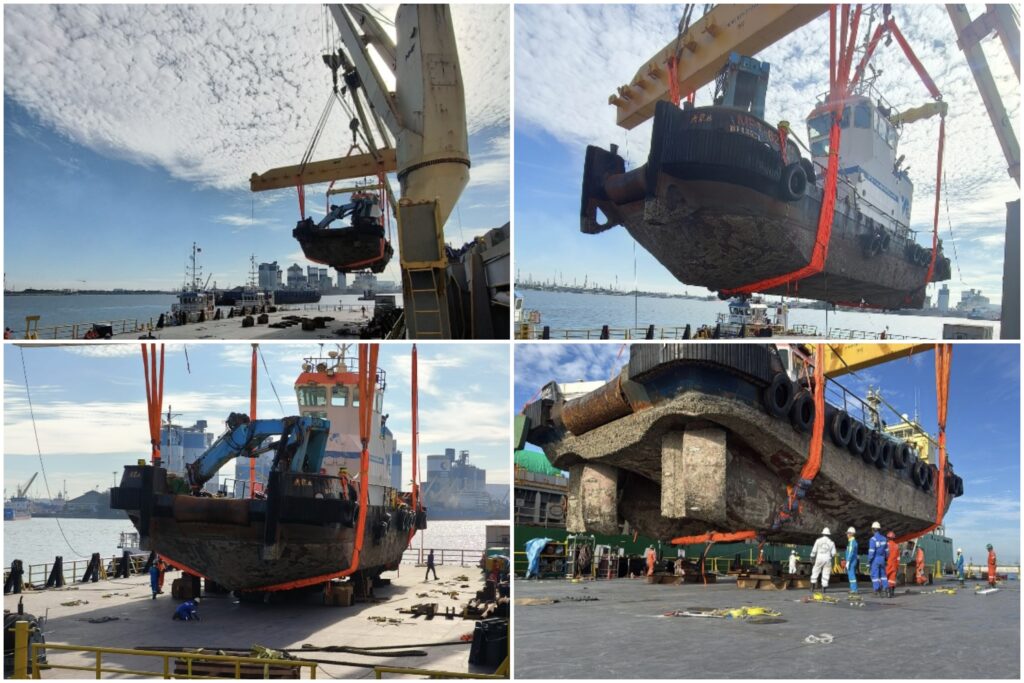
– Oversized Waste Heat Boiler Modules (Hong Kong)
We managed the transport of multiple oversized boiler modules and associated components, ranging from 2.45 tonnes to over 72 tonnes, and up to 17 meters in length. The operation involved midstream transfers using crane barges, precise land transportation with steerable-axle trailers, and tandem lifting with heavy-lift mobile cranes. Through detailed planning, including route studies, swept-path analysis, and permit coordination, we ensured seamless execution, even within highly restricted urban environments.
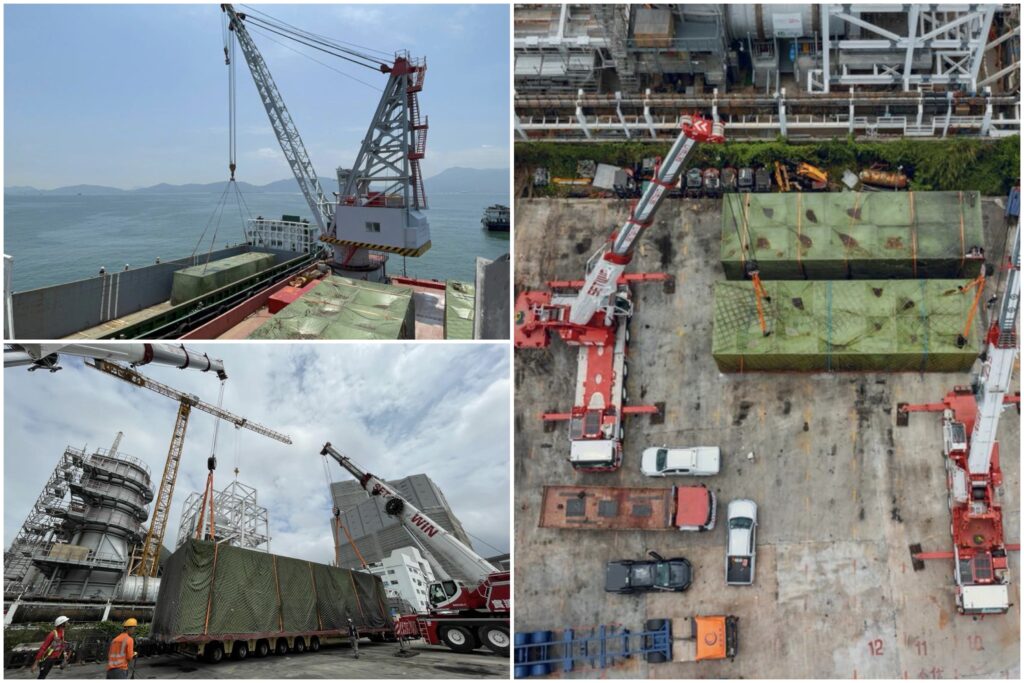
– Generator Set & Oversized Grinder (Hong Kong)
At the Hong Kong–Macau Ferry Terminal, we executed a midnight crane barge lift to position a generator set under tight spatial and operational constraints. Concurrently, we transported a 47-tonne oversized grinder (17.3 m × 3 m × 3.6 m) via a coordinated convoy, employing tandem lorry cranes, custom-engineered spreader beams, and night escorts. The operation was precisely timed and safely executed within an active and congested area.
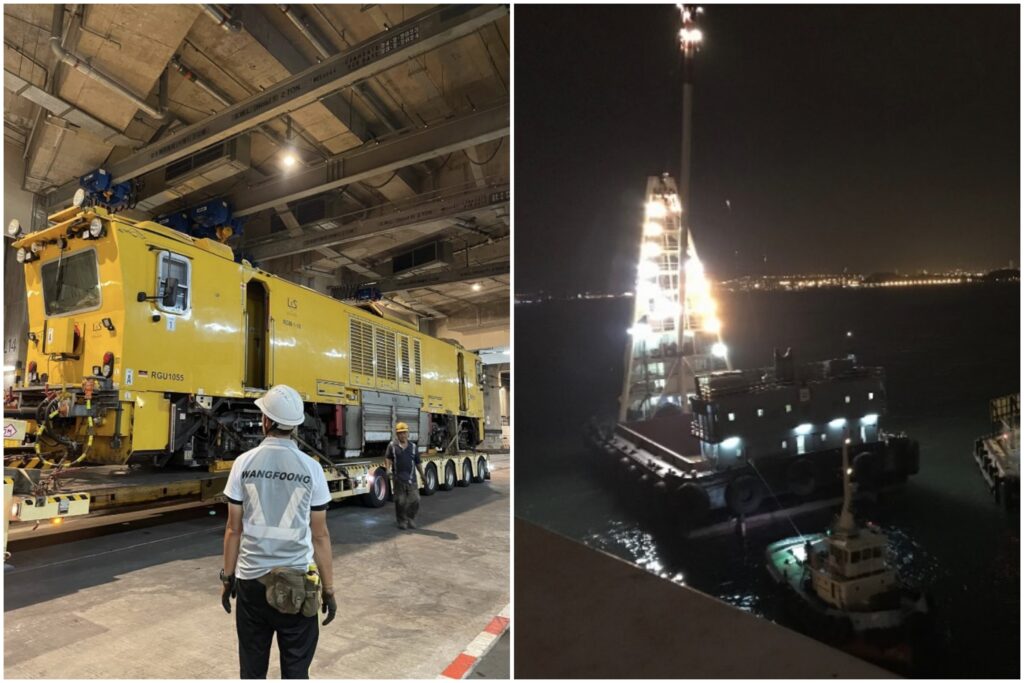
– Rail Components Handling (Hong Kong)
For a high-profile rail infrastructure project, we delivered 24 rail units each up to 38 meters long using mid-stream handling methods. The process involved crane barge lifts and tandem hoisting onto specialized trailers, followed by inland transport through constrained urban routes. Strategic planning and close coordination ensured uninterrupted delivery despite logistical and regulatory challenges.
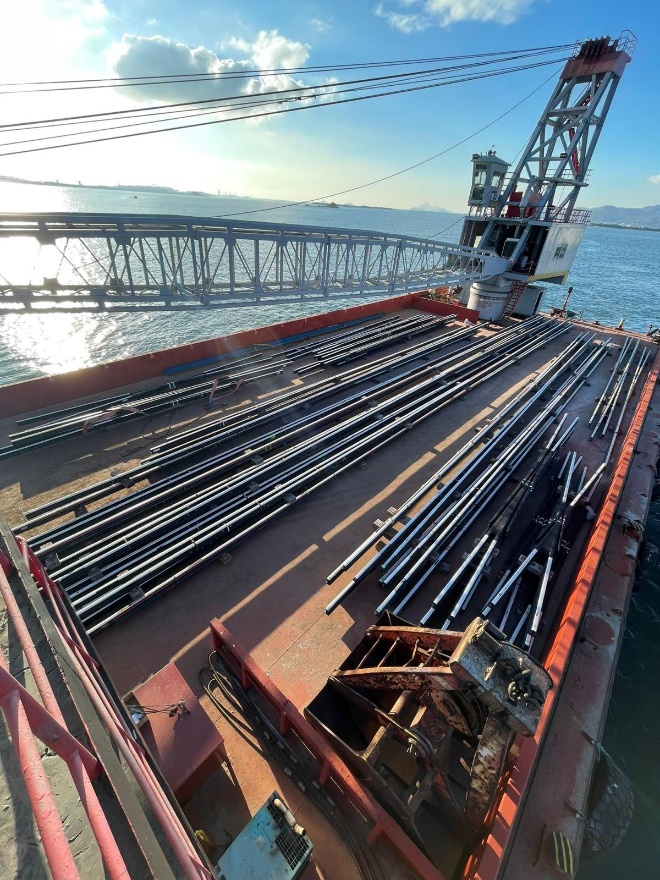
Is the shipping industry shifting from Hong Kong to Singapore?
The shipping industry is experiencing a gradual but cautious shift from Hong Kong to Singapore, driven primarily by geopolitical and regulatory concerns. Many shipping companies are looking to reduce risks associated with potential U.S.–China tensions by relocating their vessel registrations and operations to more politically stable jurisdictions, with Singapore being a preferred choice due to its transparent legal framework and strong maritime infrastructure.
Singapore remains a global maritime leader, ranked as the world’s top maritime city in 2024. Its continued investments in port infrastructure such as the state-of-the-art Tuas Mega Port, alongside its record-breaking container throughput, reinforces its appeal as a resilient, efficient, and strategic shipping hub.
Overall, while Hong Kong retains relevance in specific sectors, the shift toward Singapore reflects a long-term realignment of risk, resilience, and efficiency. Singapore’s strategic foresight and continued investment in port infrastructure position it as a leading choice for companies seeking stability and regional leadership in global trade.
With the strategic location of Singapore as mentioned, are you able to also arrange transshipment via Singapore for any would-be clients?
Absolutely. Singapore’s strategic location at the crossroads of major global shipping lanes makes it an ideal transshipment hub, and yes, we are fully capable of arranging transshipment services via Singapore for our clients.
Through our Singapore office, we can coordinate seamless transshipment solutions for a wide range of cargo, including heavy-lift, oversized, and project-critical components. This includes planning for cargo arriving from various origins, facilitating efficient customs clearance, and arranging onward shipment to final destinations across Asia, the Middle East, or beyond.
We work closely with port operators, shipping lines, and local service providers to ensure that even time-sensitive or complex cargo can be handled with precision and minimal delay. Our integrated approach allows us to manage not just physical transfer, but also the documentation, compliance, and risk management involved in transshipment operations.
Whether it’s part of a broader project logistics plan or a one-off shipment, we can leverage Singapore’s world-class port infrastructure to deliver reliable and cost-effective transshipment solutions for our clients.
How do you view the rest of this year, and what is your forecast for 2026?
This year, we’re seeing more stability returning to global supply chains and freight rates compared to the volatility of recent years. There is sustained demand across Southeast Asia, especially in energy, infrastructure, and renewable projects, which continue to drive the need for specialized project logistics. Many clients are focused on early-stage planning, tender support, and risk mitigation, which aligns well with our expertise.
For 2026, I anticipate an uptick in project executions as delayed infrastructure and energy developments move forward. This will increase demand for heavy-lift and complex logistics solutions, especially within the APAC region. Additionally, supply chain resilience remains a key concern, pushing companies to diversify routes and rely more on strategic logistics partners.
Geopolitical uncertainties will persist, but I expect logistics providers who can offer agility, regional insights, and compliance support will see growing opportunities.
At Wangfoong, we are preparing to scale our capabilities to meet this demand and support our clients through this dynamic period.
How would it be best for our readers to get in touch with you?
I’d be happy to connect with anyone interested in discussing logistics solutions, project support, or potential collaborations.
You can reach me directly via email at: rae.choong@wangfoong.com.sg
Alternatively, feel free to connect with me on LinkedIn.
For general enquiries or service requests, our Singapore office can also be contacted at:
📍 Wangfoong Singapore
📞 65-69088573
✉️ contactus@wangfoong.com.sg
Website: https://www.wangfoong.com.hk/
We’re always open to exploring how we can support your logistics needs—whether it’s for a specific project, tender planning, or regional transhipment solutions.


